Do you ever think that a modern small capsule-style house could make more money than a traditional home? Even though capsule houses are changing the real estate market because of their lower costs and faster construction times, are the returns greatly better?
In this article, we will examine actual numbers, case studies, and major comparisons to determine what gives you the best ROI: a capsule home or a traditional home? So, Keep Reading!
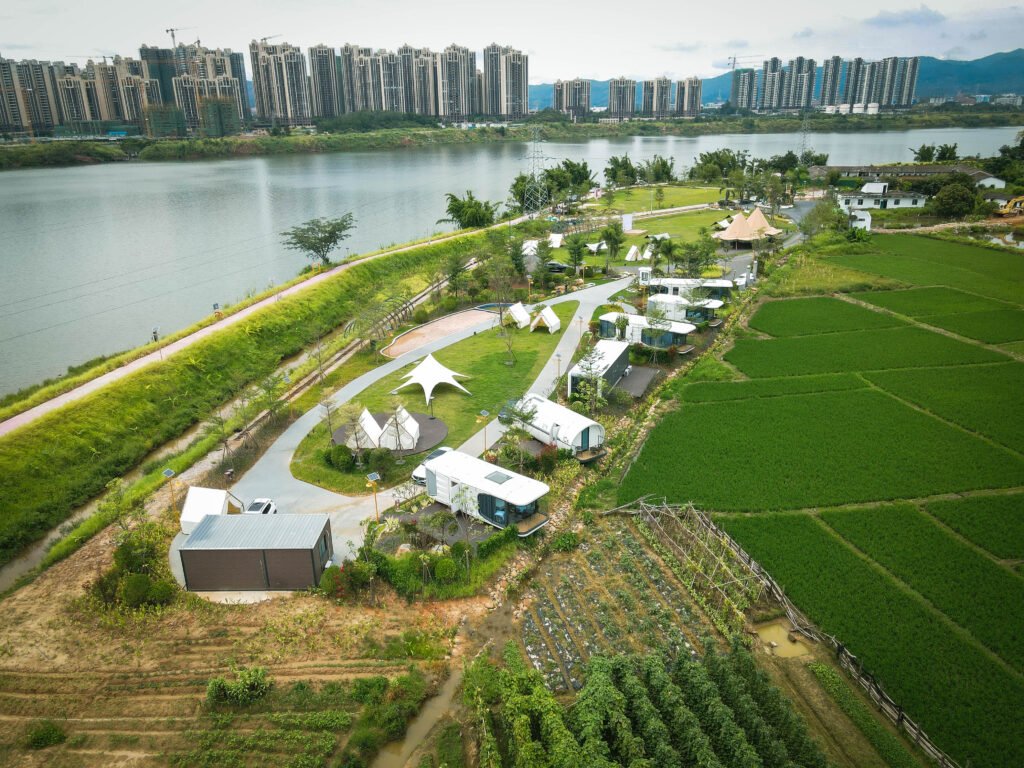
1) Key Differences Between Capsule Houses and Traditional Homes
Before selecting what type of home best suits your business, it would be useful to examine the comparison between capsule houses and traditional homes in several areas. In this section, we will discuss the comparison between capsule houses & traditional homes in a table:
Factor | Capsule House | Traditional Home |
Build Time | Ready in 6 to 12 weeks | Takes 9 to 15 months |
Cost per ft² | About $120 to $180 | About $200 to $300 |
Mobility | Can be moved easily | Stays in one place |
Financing & Appraisal | Harder to get a loan; fewer comparisons | Easier to get a loan; lots of data |
Value Retention | Keeps 70–80% of value after 10 years | Often goes up in value with the land |
Design & Size | Usually small and compact | Usually bigger with more rooms |
Energy Use | Often uses less energy (eco-friendly) | May use more energy |
Customization | Limited layout choices | Fully customizable during build |
Set up Location Options | Can be placed in remote or small areas | Needs a larger, prepared plot |
Installation Process | Mostly pre-built and fast to install | Built on-site, takes much longer |
2) Initial Investment Cost
The starting cost of capsule houses compared to traditional homes significantly impacts the ROI for your business. Let’s examine how these homes compare to each other.
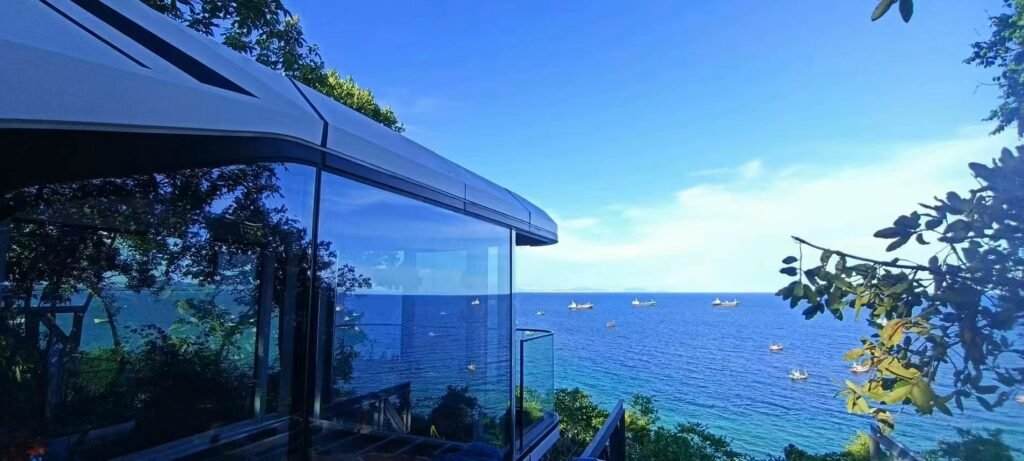
i) Cost of Purchasing a Building
These capsule houses are much cheaper to buy or build. Their price range is between $10,000 to $50,000, depending on size, materials used, and even the extras included. In comparison, traditional homes are priced above $250,000, even with the local construction costs and inflation considered.
ii) Land Requirements and Cost Implications
Capsule houses use less land because of their compact shape. This is favorable if you are situated in a high-cost or space-constrained region. More than one unit can be placed on a single plot of land, resulting in improved land utilization.
In contrast, traditional homes require more space and usually have zoning restrictions that limit density, which results in higher land costs and longer waiting periods for approval.
iii) Permits and Construction Project Timelines
It may be easier and quicker to get building permits for capsule houses in places that allow temporary or modular housing. Some areas classify them as mobile homes or temporary buildings, which helps avoid some regulations. Moreover, many capsule houses are made off-site and brought fully assembled, so construction can be finished in as little as a few weeks.
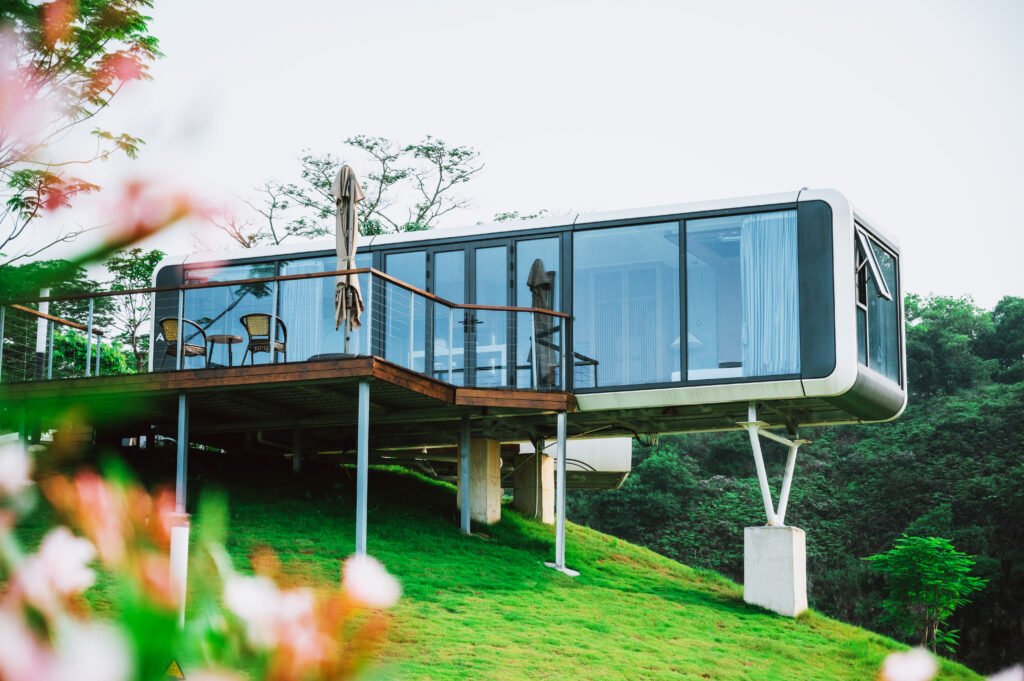
On the other hand, Traditional houses take much longer to build for the first time. With much more costly inspections and permits required, construction timelines can take six months to a year or even longer. This delays income generation, particularly while also increasing holding costs.
3) Operational and Maintenance Costs
Capsule House: Selecting a capsule house means you won’t face high energy bills. This is because capsule houses are smaller and more energy-efficient, keeping warmth in during winter and the heat out during summer.
Your business can save more every month since your heating and cooling costs would be 20-30% lower than a standard home. This means additional savings for your business every month.
Traditional Home: A traditional home allows for the most space; however, the cost to operate the utilities throughout the year is significantly higher. Even though the materials used may be of high-quality standards, the oversized nature results in more expenses to maintain the comfort of the house.

4) Revenue Flexibility
Understanding the various approaches to monetizing your property, different in their flexibility, can be helpful.
Capsule House: A capsule house can be used for multiple purposes. Its eye-catching design makes it very useful for short-term rentals. Additionally, it can be transformed into a mobile pop-up store or an office that you can relocate at your convenience. This provides you with several alternative income avenues.
Traditional Home: A traditional house is more suitable for longer leases, the way people stay for months or years. However, changing the use of the property, like moving it or turning it into something, is costly and challenging.
5) Devaluation and Resale Value
Think about the future value of your property as well. Some structures appreciate better over time than others. Now we will analyze how capsule houses compare with traditional homes.
Capsule House: First of all, as long as you maintain a capsule house, it retains approximately 70–80% of its value after 10 years. This means that you would not essentially lose any money over time. In addition, the demand for these new and visually appealing houses, especially in the short-term rental and tourism market, is likely to increase.
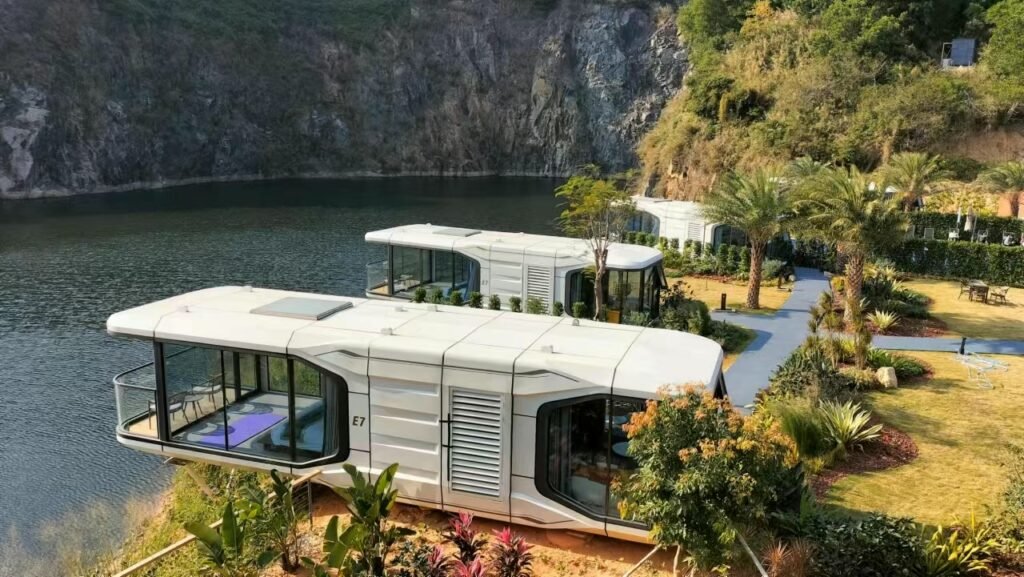
Traditional Home: In contrast, more conventional houses tend to appreciate in value, primarily if constructed in a good area. As time passes, the value of the land increases, which in turn boosts the value of the house. Additionally, people tend to buy traditional houses more often because they are easier to sell and provide good returns.
6) Business Study Case Examples
In this section, I want to help make your decision easier by showing you examples of how other people are leveraging capsule houses and traditional homes for profit.
i) Capsule Houses in Action
A good number of camping grounds and resorts have begun using capsule houses to construct contemporary, stylish cabins. These miniature modern homes entice travelers seeking an experience that fuses camping with glamping luxury camping.
One resort in Queensland set up 10 capsule units on a tiny plot of land, earning a profit just weeks after setup. Another example would be a mobile office business in New South Wales. They utilize capsule units as pop-up workspaces, leasing them to firms that require a nook and cranny office for a short time.
Because the units are movable, the business can serve more markets and customers.
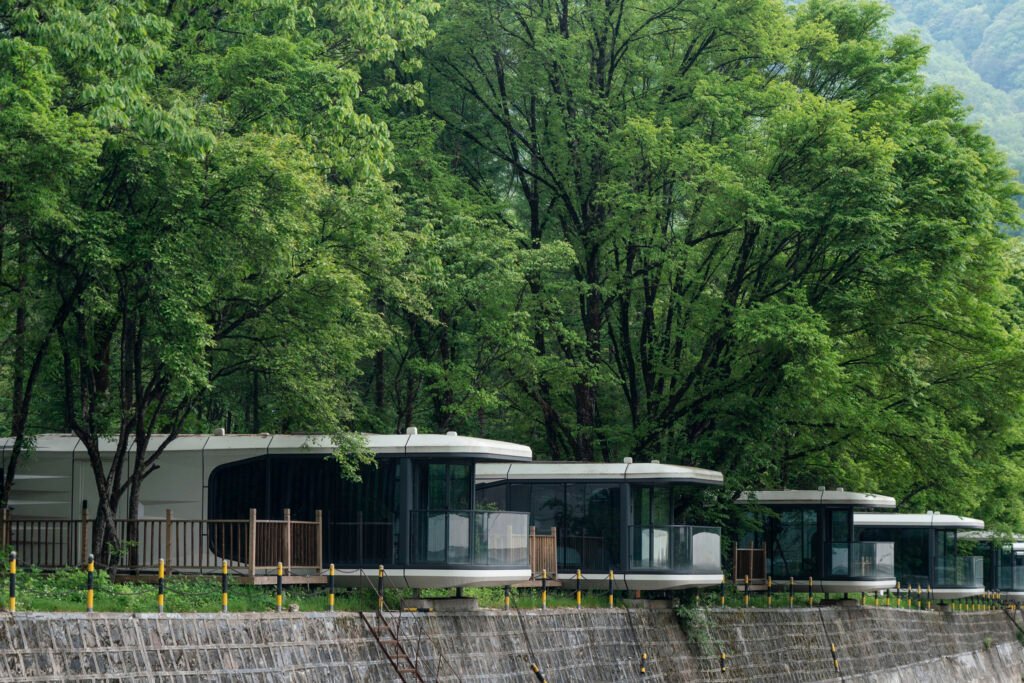
ii) Traditional Homes in Business
On the other hand, a number of property investors still prefer residential properties for buy-and-hold investment. Take, for example, the case of a small real estate company that converted three houses into rental units and now enjoys a steady income stream.
Although the conversion took almost a year to complete and was expensive up front, the properties have increased in value over time due to appreciation in the value of land. In general, traditional homes yield steady returns over a long time, especially if you are located in a growing region.
However, compared to capsule houses, more time and money are required up front.
7) Pros and Cons of Capsule Houses vs. Traditional Homes
Assessing both capsule houses and traditional homes is fruitful because both have their pros and cons. With this viewpoint, it is easier to identify which option aligns best with your goals, timeline, and budget.
Types | Pros | Cons |
Capsule house |
|
|
Traditional homes |
|
|
Harry Newman from Quora said that capsule living could work well if you’re just starting out, but he imagines it might get old after a while. He pointed out that a traditional apartment or shared home with just a few roommates, where you still get your own room, might be more sustainable long-term, especially if there are rules in place and maybe even a cleaning service for shared spaces.
That said, he noted that if traditional rentals are starting to pack multiple roommates into one bedroom with bunk beds, then capsule living could actually be a better option, as long as the amenities are decent and cleaning is included.
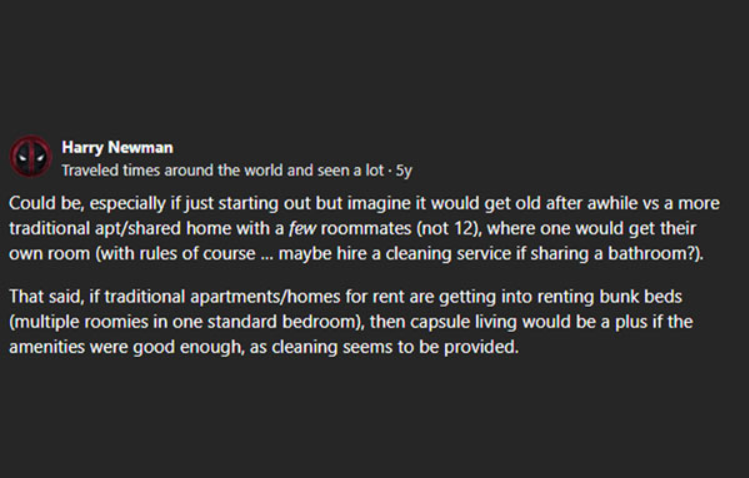
Conclusion
In short, in terms of Return of investment, capsule houses have quicker to market timelines and a wider range of income streams when compared to traditional homes, which provide long-term value and steady returns. Depending on your business goals, budget, and timeline, this can be tailored to your best choice.
If you want fast gains and flexibility, go with a capsule. If you would prefer a stable property that appreciates over time, a traditional home might suit you better.
At Glam, we provide capsule homes that enable your company to begin profiting quickly and remain agile.


